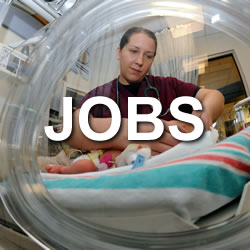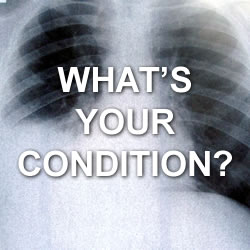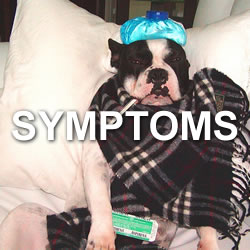Measles (Rubeola)
Measles may not spread as fast as erroneous sound bites and tweets, but they both have the potential to cause a great amount of damage - Bill Foster

image by: Lhaviyani Atoll Hospital - LHAH
HWN Recommends
Measles: Why it’s so deadly, and why vaccination is so vital
Thanks to vaccination, however, between 2000 and 2016 there was an 84 percent decrease in measles mortality, and over 20 millions deaths were prevented due to vaccination. What an achievement...
These successes don’t mean the measles is gone or that the virus has become weak. Far from it. Seeing the virus up close and personal over all these years and knowing what happens when it runs rampant in an infected host gives me such respect for this minuscule “little bag of destruction” whose genetic material is 190,000 times smaller than ours. It’s also ironic how losing sight of the disease because of the success of vaccination has brought new societal challenges.
Resources
 Measles making a comeback in US due to vaccine skepticism, says CDC
Measles making a comeback in US due to vaccine skepticism, says CDC
Though measles had been eradicated in the US in 2000, the disease is expected to continue a nationwide spread primarily because of vaccine skepticism, the Centers for Disease Control and Prevention (CDC) has said.
 Measles outbreaks cause alarm: what the data say
Measles outbreaks cause alarm: what the data say
The COVID-19 pandemic worsened matters, says Bedford. At first, the number of measles cases dipped because of social-distancing measures. But vaccine uptake also dropped, contributing to the latest surge, she says. Moreover, anti-vaccine messaging during the pandemic caused some people to question vaccine safety, which might have delayed uptake, says Bedford. “People have got more questions, which, unfortunately, due to cuts in public-health funding, aren’t always properly addressed,” she says.
 ‘Measles destroyed my health – my parents didn’t vaccinate me’
‘Measles destroyed my health – my parents didn’t vaccinate me’
Sorrel Kinton missed out on childhood jabs due to vaccine hesitancy. It was a decision that cost her dearly.
The Rash
The symptoms of measles generally begin between 7 and 14 days after the person was infected and start with 3-5 days of high fevers, cough, runny nose, and red, watery eyes followed by a rash. The rash consists of small red bumps on top of flat red spots that begin on the head and face near the hairline and move downward toward the feet to cover the body.
Measles Not Measles
Koplik’s Spots: Viral enanthem of measles typically starting 1-2 days before the rash. Appearance is similar to “grains of salt on a wet background” and may become less visible as the maculopapular rash develops.
What is the difference between measles and rubella?
Measles.. Small white spots in the mouth (called Koplik spots) within 2-3 days. Then a rash, red spots spread to the body after 3-5 days. Rubella... ink rash that begins in the face and moves to the body, lasts 3-5 days.
Joint Statement from the Measles & Rubella Initiative...
Since the Measles & Rubella Initiative (M&RI) launched in 2001, impressive gains have been made towards controlling measles outbreaks and eliminating the disease, thanks to the hard work of ministries of health, healthcare workers around the world and our many partners.
Measles Is Horrible
The anti-vaccine movement is wrong to dismiss the disease’s dangers (as it is wrong about so many things).
Measles Outbreaks Show Why Anti Vaxxers Made WHO's 10 Global Health Threats
Look at what made the World Health Organization's (WHO's) just-released list of "10 threats to global health in 2019." Right alongside the Ebola virus, HIV, antibiotic-resistant bacteria, pollution, and non-communicable diseases such as obesity, diabetes, and heart disease is "vaccine hesitancy." That's right, one of the biggest threats is not a disease, not the lack of a prevention measure or a treatment, and not the lack of resources.
Anti-Vaccine Movement Causes Worst Measles Epidemic In 20 Years
Perhaps the Disneyland epidemic, which has now spread to 14 states, will finally convince parents, schools, and state legislatures that they need to insist that children get vaccinated before going to school. Perhaps it will also convince parents to stop listening to nonsense, and choose wisely by getting their children vaccinated against measles. We won this battle before, and we can win it again.
Children Are Dying From Measles At An Alarming Rate: Report
The Measles & Rubella Initiative has warned that the only way to get back on track to eliminating the virus is by raising awareness about the disease’s effects, increasing funding and supporting vaccine campaigns.
Disneyland Outbreak Lesson: Vaccinations Prevent Measles
Even though measles was eliminated from the United States in 2000, outbreaks can occur when unvaccinated travelers pick up the measles abroad, importing the virus as an unwelcome, and often unknown, souvenir
Mankind almost beat measles, but the virus is storming back in Europe
So why the high rates? Officials in Europe and America are pointing, in part, to the populations of parents who are actively choosing to not vaccinate their children.
Measles-Mumps-Rubella Vaccine Not Linked to Autism, Large Study Concludes
A study published Tuesday in the Journal of the American Medical Association has found no link between the measles-mumps-rubella (MMR) vaccine and autism, even in children considered to have an elevated risk of developing the disorder.
Measles: Perilous but Preventable
Measles was eliminated from the United States in 2000, meaning that the infection no longer originates here. But worldwide, there are still about 20 million cases a year; in 2013, about 145,700 people died of measles. Travelers can bring the virus into the United States and transmit it to people who have not been vaccinated.
Measles: should vaccinations be compulsory?
With measles rising across America and Europe, should governments go further and make vaccination compulsory? Most would argue that this is a terrible infringement of human rights, but there are precedents.
Ready or Not: Responding to Measles in the Postelimination Era
As measles incidence increases, clinicians have a vital role to play. We need to talk to our patients about measles vaccination and remind them what is at stake if imported measles cases continue to land in communities of unvaccinated persons, especially for those who are too young or ineligible to be vaccinated.
Separating Fact from Fiction: The Truth about Measles, Vaccines and How It All Affects You
Anyone who received the measles vaccine prior to 1968 should be immunized again, as vaccines during that period could not fully protect an individual.
The Struggle to Fight Measles in Close-Knit Communities
Research on how to change the minds of vaccine-resistant parents is ongoing, but experts say with such diverse populations there isn’t a one-size-fits-all approach.
This Mama Isn’t Scared of the Shmeasle Measles
I’m not vaccinating my children. No way. No how. Not ever. This mama isn’t scared of the shmeasle measles.
Traveling Abroad? Born Before 1989? You May Need a New Measles Vaccination.
The wildly contagious virus is still alive and well in Europe, Africa, and Asia—if you’re going there, you might need better protection.
Washington State Becomes Latest Hot Spot in Measles Outbreak
These outbreaks are largely caused by a drop in vaccination rates in some communities, and the World Health Organization recently declared the antivaccination movement as one of the top 10 global health threats in 2019.
Why measles is back in the US
Measles is back in the United States. This completely preventable disease was eradicated in 2000 but has made a comeback in the past decade. More people have gotten measles in the first three months of 2019 than in all of 2018. But the outbreaks aren’t occurring all over the US — they’re happening within specific groups of people.
Why Mumps And Measles Can Spread Even When We're Vaccinated
Measles is a terrific vaccine. If you get two doses, it's predicted to protect 99.99 percent of people for life... The mumps vaccine, on the other hand, is not so good. The protection rate varies from study to study. But it's usually in the mid-80s.
Worried About Measles? Don't Call Dr. Bob Sears
The virus is still out there, beyond our borders, and unvaccinated people travel beyond those imaginary lines that pathogens don’t seem to honor and bring them home. Clearly, the real barrier between the US and measles is our domestic vaccine program. If measles breaks out in your actual community, don’t actually call him. Just get yourself and your children vaccinated if you haven’t already.
 Measles: Why it’s so deadly, and why vaccination is so vital
Measles: Why it’s so deadly, and why vaccination is so vital
Measles is a highly contagious and sometimes deadly disease that spreads like wildfire in naive populations. The virus played its part in decimating Native American populations during the age of discovery. Since these people groups had no natural immunity to the diseases brought to the New World by Europeans, some estimates suggest up to 95 percent of the Native American population died due to smallpox, measles and other infectious diseases.
9 things everybody should know about measles
There’s one fact that makes the measles virus really scary: it’s one of the most infectious diseases known to man. A person with measles can cough in a room, leave, and — if you are unvaccinated — hours later, you could catch the virus from the droplets in the air that they left behind. No other virus can do that.
6 Terrifying Facts About Measles
Measles is one of the most contagious illnesses known to man.
Measles & Rubella Initiative
The Measles & Rubella Initiative is committed to ensuring that no child dies from measles or is born with congenital rubella syndrome. We help countries to plan, fund and measure efforts to stop measles and rubella for good.
CDC
Measles is a highly contagious virus that can lead to complications. Learn about its history, answers to common questions, and, if you’re a parent, how you can protect your child.
DrReddy.com
There are two "forms" of measles: rubeola (the "ordinary" kind), which causes more serious symptoms and can do permanent damage, and rubella ("German" measles), which is very benign if you have it as a child or an adult but can induce severe birth defects in womem infected early in pregnancy. Aside from some similarity in symptoms, there isn't much in common betwen the two viruses.
KidsHealth
While measles is probably best known for its full-body rash, the first symptoms of the infection are usually a hacking cough, runny nose, high fever, and red eyes. A characteristic marker of measles are Koplik's spots, small red spots with blue-white centers that appear inside the mouth.
MayoClinic
Also called rubeola, measles can be serious and even fatal for small children. While death rates have been falling worldwide as more children receive the measles vaccine, the disease still kills more than 100,000 people a year, most under the age of 5.
MedicineNet
People who have been appropriately vaccinated (or who have had the disease) and who are exposed to a patient with measles do not need to do anything. If an unimmunized person is exposed to a patient with measles, they should receive the vaccine as soon as possible. This may prevent the disease if given within 72 hours of exposure. Immune globulin may have some benefit if given within six days of exposure.
National Foundation for Infectious Diseases
Measles is a highly infectious respiratory disease that can result in severe, sometimes permanent, complications including pneumonia, seizures (jerking and staring), brain damage, and death. It it highly contagious and spreads easily by contact with an infected person through coughing and sneezing. In fact, if a person has measles, 9 out of 10 of his close contacts will get it too, unless they are protected.
ScienceDaily
Mumps, Measles, Rubella News.
WHO
Measles is a highly contagious, serious disease caused by a virus. In 1980, before widespread vaccination, measles caused an estimated 2.6 million deaths each year. The disease remains one of the leading causes of death among young children globally, despite the availability of a safe and effective vaccine. Approximately 145 700 people died from measles in 2013 – mostly children under the age of 5. Measles is caused by a virus in the paramyxovirus family and it is normally passed through direct contact and through the air.

Introducing Stitches!
Your Path to Meaningful Connections in the World of Health and Medicine
Connect, Collaborate, and Engage!
Coming Soon - Stitches, the innovative chat app from the creators of HWN. Join meaningful conversations on health and medical topics. Share text, images, and videos seamlessly. Connect directly within HWN's topic pages and articles.














